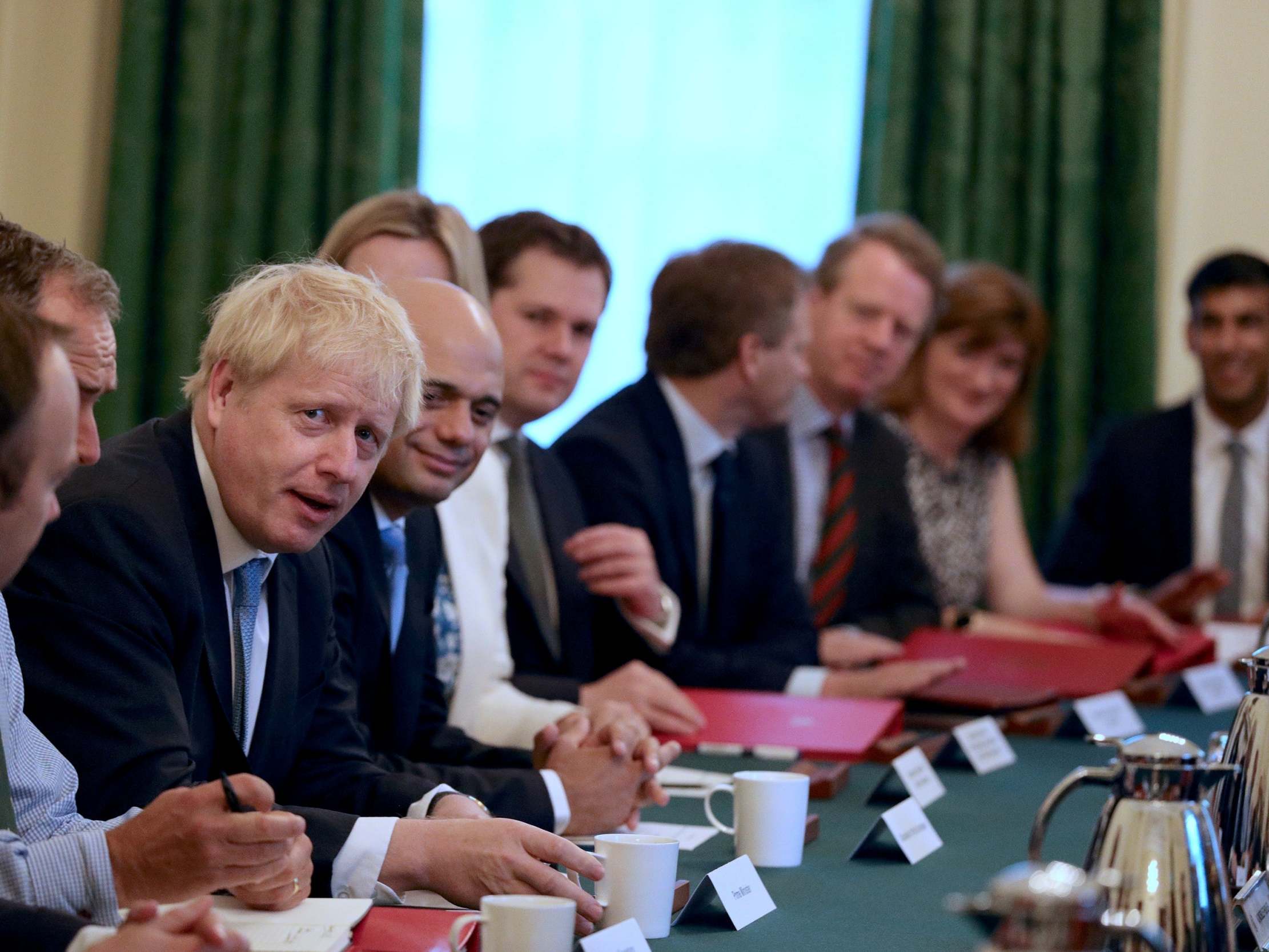How representative of Britain is Boris Johnson’s new cabinet?
Politics Explained: The new administration breaks records with those from Black, Asian and Minority Ethnic backgrounds, but is wide of the mark on gender and educational background

Before conducting one of the most brutal culls in a generation, allies of Boris Johnson briefed he would unveil a “cabinet for modern Britain”.
“Boris will build a cabinet showcasing all the talents within the party that truly reflect modern Britain,” a source close to the new Tory leader said in the final hours of Theresa May’s premiership.
In terms of individuals from Black, Asian and Minority Ethnic (Bame) backgrounds, it certainly is one of the most diverse administration’s in British history. While the last UK census said 14 per cent defined as non-white, of Mr Johnson’s new cabinet, 17 per cent are from Bame backgrounds.
When the traditional Downing Street cabinet group photograph is published, it will undoubtedly be a stark contrast to previous British governments.
Two of the four great offices of state – the Treasury and the Home Office – are held by the son of a Pakistani bus driver, Sajid Javid, and Priti Patel, the daughter of Ugandan Asian immigrants, respectively.
But in terms of gender, and of educational background, the new administration is wide of the mark. Out of 33 positions at the top table, eight were given to women – just under under a quarter of the cabinet. Labour’s shadow cabinet has near parity in gender balance.
Of course, it’s a significant increase on previous Conservative cabinets. Margaret Thatcher was the only woman in her own top team. There is still much progress to be made before the government reflects the UK at large, with women making up 51 per cent of the population.
The imbalance is as stark when educational background is considered. Despite just 7 per cent of the entire population attending private schools, nearly two-thirds (64 per cent) of the cabinet attended fee-paying institutions, according to social mobility charity the Sutton Trust.
Including the prime minister himself, four members of the cabinet attended Eton College – one of Britain’s most elite private schools that has educated more than a dozen former prime ministers.
In its analysis of Mr Johnson’s top team this week, the Sutton Trust made clear it is one of the most privately educated cabinets for a generation. The proportion of those who attended fee-paying schools is more than double that of Ms May’s embattled government.
Sir Peter Lampl, founder of the charity, said Britain is an increasingly divided society, and the “make-up of Johnson’s cabinet underlines once again how unevenly spread the opportunities are to enter the elites”.
Join our commenting forum
Join thought-provoking conversations, follow other Independent readers and see their replies
Comments